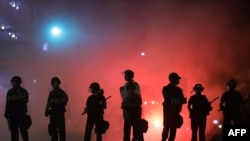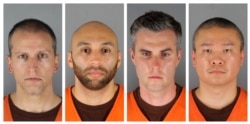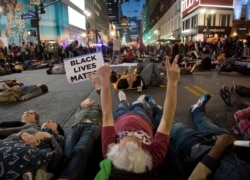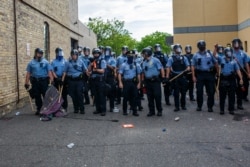Minnesota prosecutors seeking to convict Derek Chauvin, a white, former police officer, of murder in the death of African American George Floyd by kneeling on his neck, face a daunting reality:
While they possess considerable evidence, including video footage and damning eye-witness accounts, historically it has been nearly impossible to win similar cases.
In more than 99% of the known on-duty killings since 2013, American police officers are not criminally charged, according to Mapping Police Violence, a research group.
One reason is that prosecutors often defer to law enforcement officers’ judgment when it comes to the use of deadly force. On the rare occasion that officers are charged in such cases, juries usually decline to convict.
Consider Minnesota. In the state’s 165-year-history, one police officer – Mohamed Noor, a former Minneapolis police officer — is known to have been convicted of murder, and that conviction is now on appeal. Noor, a 34-year old Somali-American, was sentenced last year to 12½ years in prison in the fatal shooting of a woman while responding to her 911 call. His lawyer calls the conviction “bogus.”
Minnesota Attorney General Keith Ellison alluded to this history last week as he announced an additional charge of second-degree murder against Chauvin and aiding and abetting charges against three other officers who took part in Floyd’s arrest but did not intervene as Floyd gasped for air.
“Trying this case will not be an easy thing,” Ellison said. “We’re confident in what we’re doing, but history does show there are clear challenges here.”
The added charge against Chauvin is unintentional murder caused by felony assault. In Minnesota, felony assault is defined as inflicting substantial or great bodily harm to another person. To win a conviction, prosecutors need to prove that the act of kneeling on Floyd’s neck for nearly 9 minutes was a felony assault, according to Peter Wold, a veteran Minneapolis defense attorney who represents Noor.
“If they prove he was engaged in felony assault that resulted in his death, that is second-degree murder in Minnesota,” Wold explained.
While not all records in the case have been made public, the most damning piece of evidence prosecutors will likely use against Chauvin is a cellphone video recording of Floyd’s final moments made by a citizen.
In it, a nonchalant Chauvin, with hands in his pockets, is seen pressing his knee against Floyd’s neck for 8 minutes and 46 seconds as Floyd pleads for his life, repeatedly saying “I can’t breathe” and at one point saying, “I’m about to die.”
Nearly three minutes of this use of force came after Floyd became nonresponsive, according to the criminal complaint against Chauvin.
“This is one of the worst videos that has emerged in a very long time,” said Taryn Merkl, a senior counsel at the Brennan Center for Justice at New York University and a former top federal prosecutor in New York.
What sets the case apart from other recent on-duty killings is that by the time Chauvin arrived on the scene, Floyd was already in handcuffs and largely compliant, according to Merkl. Instead of de-escalating the situation, as officers are trained to do, Chauvin resorted to unnecessary force, she said.
“In recent years, the use of violence or the use of a weapon happened during the course of the police action to subdue the perpetrator or respond in some way to a perception of violence that they were feeling,” Merkl said. “Here you have a handcuffed man who is then subjected to potentially lethal force.”
Sean Malone, a former chief counsel for the Baltimore Police Department who represented one of six police officers accused in the death of African American Freddie Gray in Baltimore in 2015, said the video evidence in the Chauvin case will be harder to refute. The officers in the Gray case were charged with offenses from second-degree depraved-heart murder to manslaughter, reckless endangerment and misconduct in office. None of the officers was convicted.
“Here you have an officer using what I have yet to hear experts say is a police tactic, putting his knee into the throat of Mr. Floyd,” Malone said. “And he did it when he was warned repeatedly from members of the crowd and even officers from there about Mr. Floyd's deteriorating medical condition.”
That is not to say Chauvin has no defense.
Lawyers for Chauvin, who had his first court hearing Monday, will likely argue that Chauvin used a technique that he had been trained to use by his own police department, according to Paul G. Cassell, a professor of criminal law at the University of Utah and a former federal judge.
“Then the question will be whether they failed to follow procedures properly or what those procedures were,” Cassell said. “And that's where I would anticipate the center of the dispute will be in the criminal case.”
The Minneapolis Police Department on Friday agreed to ban the use of chokeholds and neck restraints by officers.
Another line of defense will likely revolve around the cause of Floyd’s death. Two recent autopsies declared Floyd’s death a homicide. But while experts hired by the Floyd family found that he died of asphyxiation, the Hennepin County Medical Examiner’s office did not reach this unequivocal conclusion.
“The defense is going to use that piece of evidence, obviously,” Wold said.
Policing can be dangerous work. Last year, 48 American law enforcement officers were killed in the line of duty and 41 others died in accidents, according to the FBI.
Police officers sometimes find themselves in perilous situations where they make spur-of-the-moment decisions about whether to use deadly force. Things happen so quickly that prosecutors often choose not to bring charges because proving them can be difficult.
“Most cases are not like Mr. Floyd’s case where the bulk of the interaction is captured on video,” Merkl said.
What is more, American courts have long recognized that police officers should have the power to use deadly force in order to protect themselves and others from dangerous suspects.
“One of the reasons it's so difficult to convict police officers in these kinds of cases is that I think everyone would agree that police officers don't wake up in the morning and say, ‘let me run out and commit a crime today,’” said Cassell, the former federal judge.
Critics say police officers often act with impunity knowing they won’t face criminal charges. Instead of facing prosecution, officers accused of using inappropriate force, often backed by powerful police unions, are let free with hardly a slap on the wrist, critics say.
But where officials and prosecutors once were reluctant to charge police officers, they’re now quick to prosecute. In the past two weeks, police officers in several cities from Buffalo to Atlanta have been charged with misconduct and inappropriate use of force.
The case against Chauvin's three fellow officers – two of whom were rookies – is not so clear-cut, according to legal experts and criminal defense lawyers. All three — Thomas Lane, Alexander Keung and Tou Thao — face identical charges of aiding and abetting second-degree murder and aiding and abetting second-degree manslaughter.
One of the challenges facing prosecutors will be proving that the officers knew or should have known that Chauvin was committing a crime that would cause Floyd’s death, legal experts say.
“The video goes on for long enough that the prosecution has very strong arguments for the aiding and abetting liability on the second-degree murder charge and certainly on the manslaughter charge,” Merkl said. “But convincing a jury of 12 people beyond a reasonable doubt is no small feat, given the general sentiments and knowledge, that police are permitted to use some force in their job."









